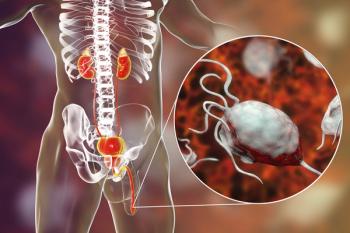
- ONCOLOGY Vol 12 No 12
- Volume 12
- Issue 12
3D Conformal Therapy Permits Use of Higher Radiation Doses in Prostate Cancer Patients
Higher doses of radiation, delivered through three-dimensional (3D) conformal therapy, have produced far fewer side effects than expected, according to a national, multicenter clinical trial conducted by the Radiation Therapy Oncology Group
Higher doses of radiation, delivered through three-dimensional (3D) conformal therapy, have produced far fewer side effects than expected, according to a national, multicenter clinical trial conducted by the Radiation Therapy Oncology Group (RTOG) and the Three-Dimensional Oncology Group (3DOG). The study, presented at the annual meeting of the American Society for Therapeutic Radiology and Oncology (ASTRO), was designed to determine whether 10% higher doses of radiation administered through 3D conformal therapy could be well tolerated by prostate cancer patients. According to study chair Jeff Michalski, MD, Not only were we able to give the higher doses, but the toxicity was much less than we expected. Only one of the 292 patients in the study had complications due to the increased dosage. We projected that there would be 18.
Side Effects and Dosage
Among the side effects that can result from this treatment are bladder problems and bleeding. Dr. Michalski said that based on earlier studies, even with the use of lower doses, researchers could have expected to see 18 patients develop such side effects. With these results, the study team now plans to increase the dose by 20%.
This study did not evaluate whether the higher dose improved the cure rate; it was only designed to determine whether patients could tolerate the higher dose. However, a new, randomized clinical trial will look at whether the increased doses improve survival in prostate cancer patients, said Dr Michalski.
Articles in this issue
about 27 years ago
Monoclonal Antibody Approved for Metastatic Breast Cancerabout 27 years ago
Booklet Provides Guidance on Appointing or Being a Health Care Proxyabout 27 years ago
Lower Genital Tract Neoplasia in Women With HIV Infectionabout 27 years ago
Clinical Status and Optimal Use of Rituximab for B-Cell Lymphomasabout 27 years ago
Clinical Status and Optimal Use of Rituximab for B-Cell LymphomasNewsletter
Stay up to date on recent advances in the multidisciplinary approach to cancer.

















































































